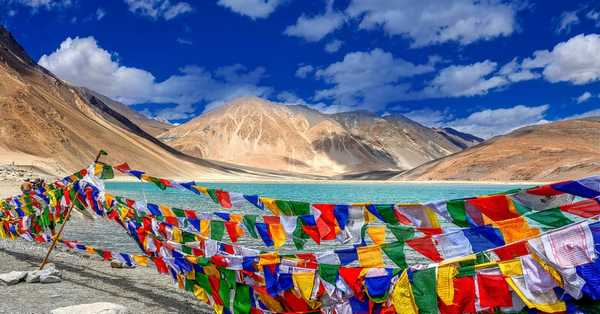You can find about travel advice such as public places & services, best restaurants, activities, sightseen and other key facts of the Ladakh, India.
Ladakh is a region administered by India as a union territory, and constitutes a part of the larger Kashmir region, which has been the subject of dispute between India, Pakistan, and China since 1947. It was established on 31 October 2019, following the passage of the Jammu and Kashmir Reorganisation Act. Ladakh is bordered by the Tibet Autonomous Region to the east, the Indian state of Himachal Pradesh to the south, both the Indian-administered union territory of Jammu and Kashmir and the Pakistan-administered Gilgit-Baltistan to the west, and the southwest corner of Xinjiang across the Karakoram Pass in the far north. It extends from the Siachen Glacier in the Karakoram range to the north to the main Great Himalayas to the south. The eastern end, consisting of the uninhabited Aksai Chin plains, is claimed by the Indian Government as part of Ladakh, and has been under Chinese control since 1962.
Foods in Ladakh :
(1) Momos
(2) Thukpa
(3) Skyu
(4) Chhutagi
(5) Tingmo
(6) Chhurpe (dried yak cheese)
(7) Butter tea
(8) Chhang
(9) Khambir
(10) Apricot Jam
Weather & geography in Ladakh :
Ladakh is thus a high altitude desert. The main source of water is the winter snowfall on the mountains. The regions on the north flank of the Himalayas Dras, the Suru valley and Zanskar experience heavy snowfall and remain virtually cut off from the rest of the country for several months in the year.
Per day Cost in Ladakh :
come about 10-15$ per day. Again, 10-15$ figure could be a low budget for someone and a little high for the others depending upon the choice of stay and food or other activities you plan to do on your Ladakh trip.
History of Ladakh :
Information about Ladakh before the birth of the kingdom during the 9th century is scarce. Ladakh can hardly be considered a separate political entity before the establishment of the kingdom about 950 CE, after the collapse of the early Tibetan Empire and the border regions became independent kingdoms under independent rulers, most of whom came from branches of the Tibetan royal family.
Language in Ladakh :
Hindi
English
Ladakhi
Purgi
Culture of Ladakh :
The culture of Ladakh refers to the traditional customs, belief systems, political systems that are followed by Ladakhi people in India. The languages, religions, dance, music, architecture, food, and customs of the Ladakh region are similar to neighboring Tibet. Ladakhi is the traditional language of Ladakh. The popular dances in Ladakh include the khatok chenmo, cham, etc. People of Ladakh also celebrate several festivals throughout the year, some of the most famous ones being Hemis Tsechu and Losar.
Things to see in Ladakh :
Pangong Lake
Diskit Monastery
Royal Leh Palace
Nubra Valley
Drass Valley
Indus and Zanskar River Sangam
Tsomoriri Lake
Khardung La
Delicacies
Hotel in Ladakh, India :
(1) The Zen Ladakh
(2) Hotel Yarab Tso
(3) The Grand Dragon Ladakh
(4) The Kaal
(5) Singge Palace Hotel
How to reach in Ladakh :
There are two ways to reach Ladakh and its capital city Leh: by road via Manali (Himachal Pradesh) or Srinagar (Kashmir) and by air with a flight to Kushok Bakula Rimpochee airport located just 4 km from Leh city centre.
Travel Guide for Ladakh : Food, Cost, Weather & geography, History, language, culture, things to see and do and how to reach. – Published by The Beyond News (Travelling).
